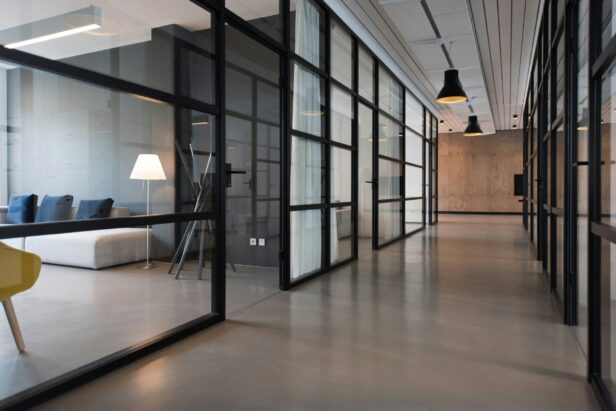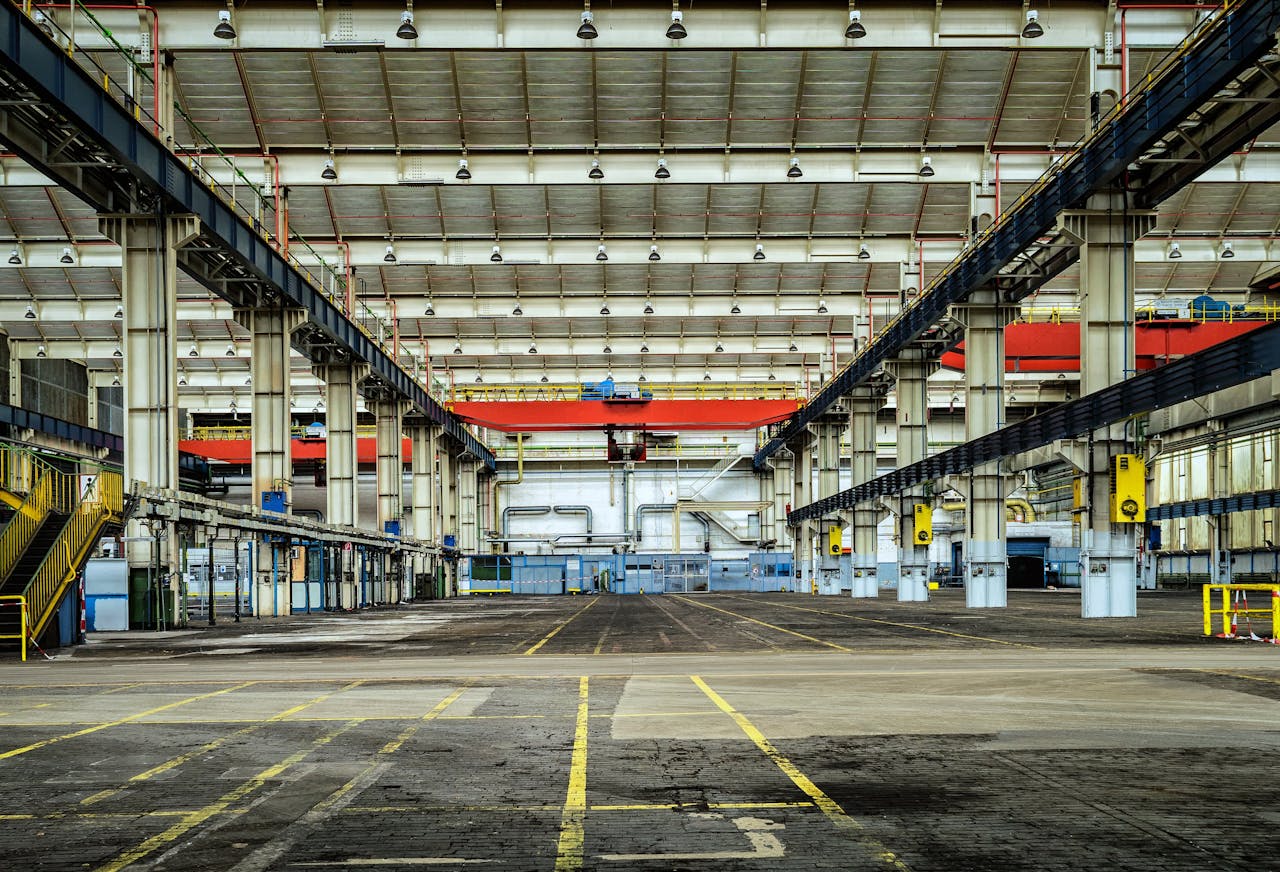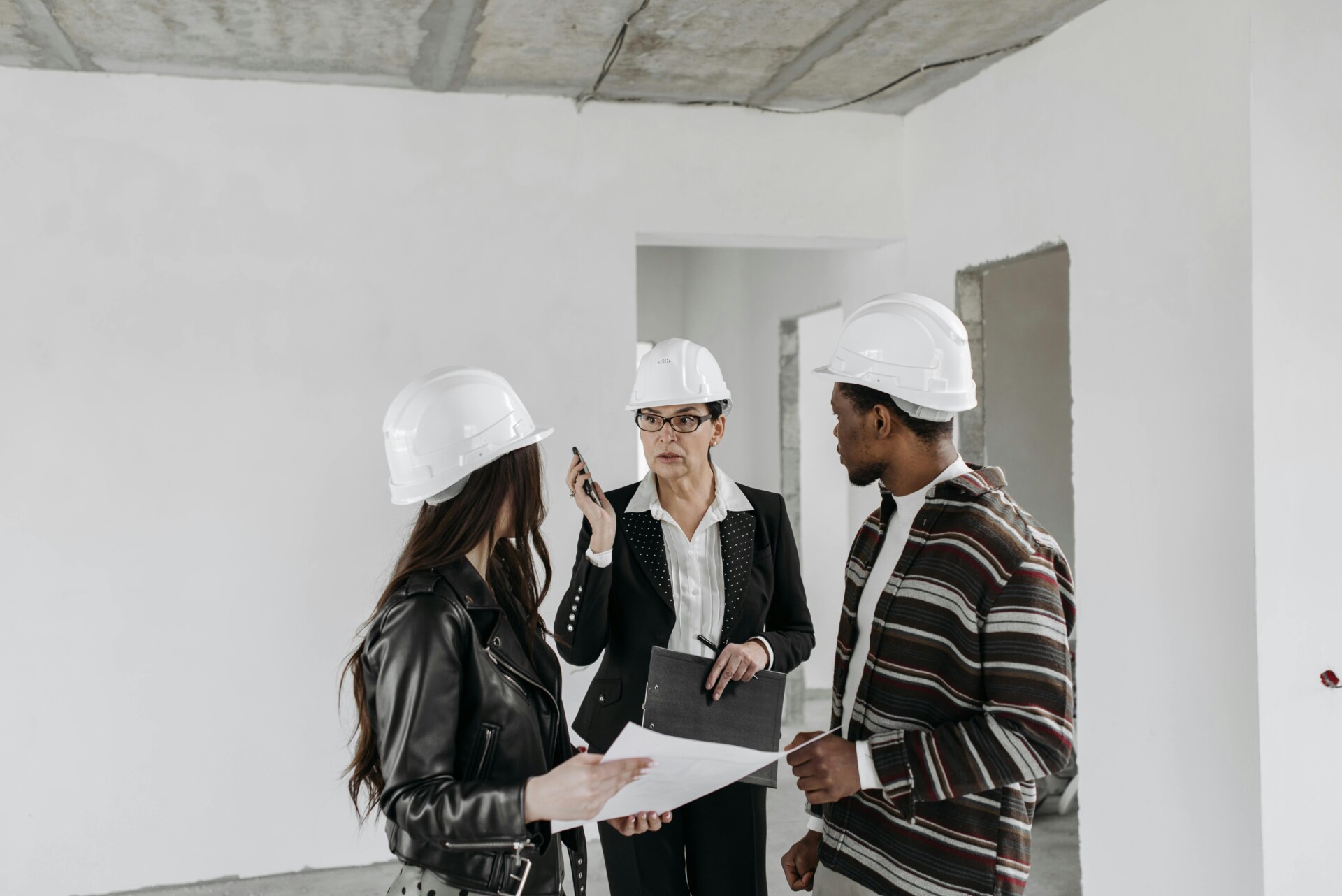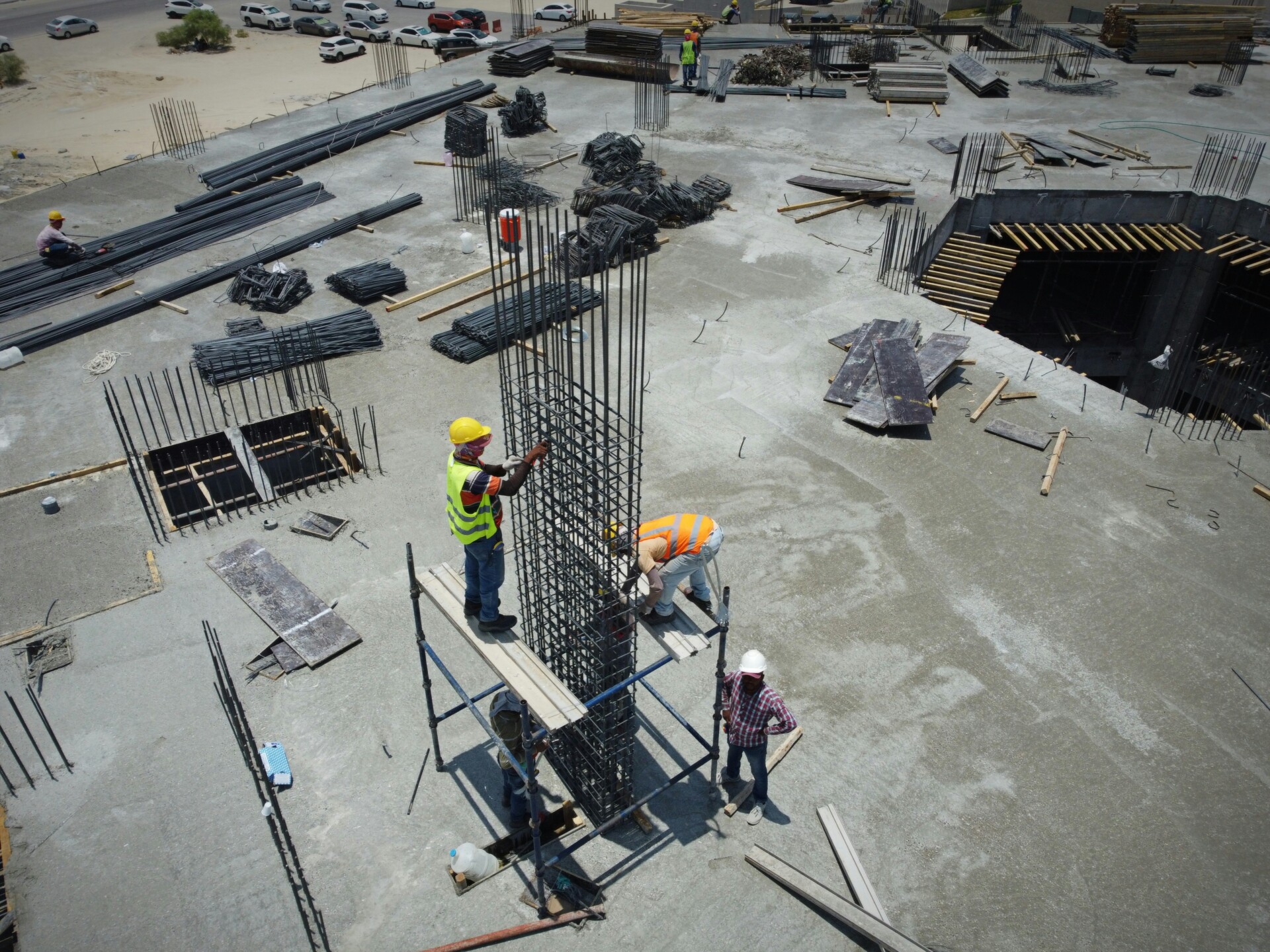Hybrid work has fundamentally altered how employees interact with office spaces. Nearly 40% of the global workforce operates in hybrid arrangements, creating unprecedented challenges for space management and workplace utilization. We see offices sitting half-empty on Mondays and Fridays while struggling with overcrowding on Wednesdays.
Office space planning tips for productive workplaces address these realities by transforming underperforming real estate into strategic assets. Proper space management reduces wasted square footage, enhances workspace efficiency, and creates environments that foster genuine collaboration rather than forced proximity. A thoughtfully planned office becomes a destination that supports onsite culture, offering compelling reasons for employees to choose in-person work over their home setup.
How Do You Assess Current Space And Usage Before Redesign?
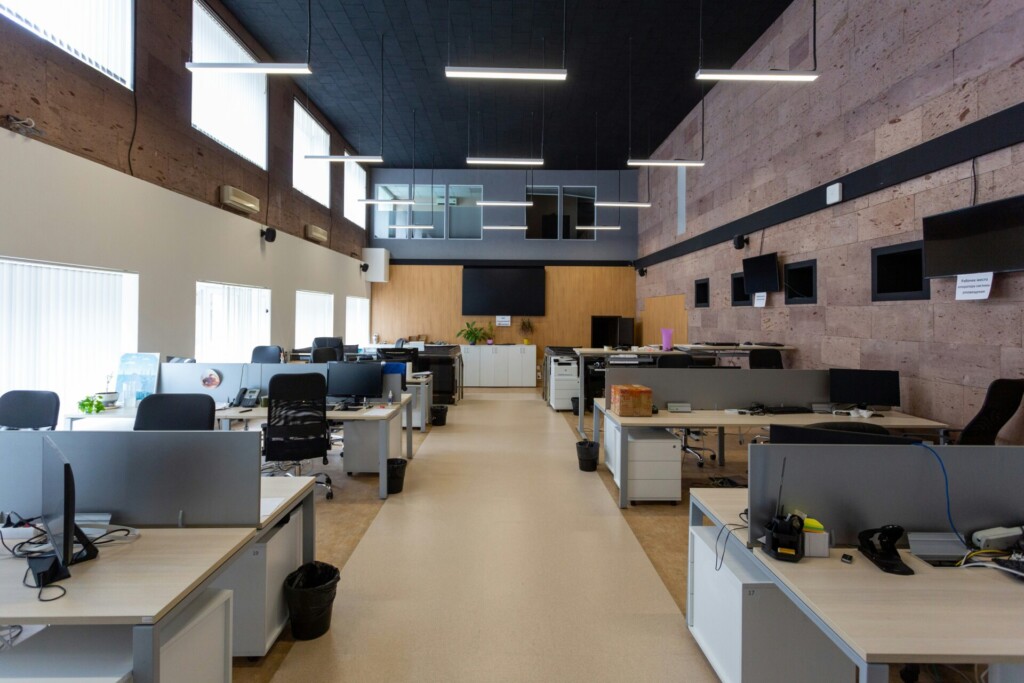
Effective space assessment starts with data collection and observation. We gather multiple sources of information to build a complete picture of how teams currently use the office. This foundation drives informed decisions rather than assumptions about workspace needs.
Review Existing Data Sources
Begin by collecting occupancy and attendance data from your current systems. Meeting room booking software shows which conference rooms see heavy use and which sit empty during peak hours. Desk booking software reveals patterns in workstation demand across different days and times.
Visitor management systems provide arrival trends that impact reception and common areas. These digital footprints tell us where people actually work versus where we think they work. The gap between perception and reality often surprises facility managers.
Conduct Floor Walkthroughs
Data alone does not capture the full story. Walk the floor at different times throughout the day to spot busy zones and quiet areas firsthand. Morning walkthroughs might reveal crowded collaboration spaces while afternoon visits show empty meeting rooms.
Flag underused areas that could serve better purposes. Note high-demand spaces where employees compete for resources. These observations complement digital data with real workplace dynamics that sensors might miss.
Track Occupancy And Density Metrics
Monitor workspace usage for at least three weeks to account for daily and weekly variations. Hybrid schedules create uneven demand patterns that require extended observation periods. Tuesday through Thursday often show peak occupancy while Mondays and Fridays remain lighter.
Compare supply to demand across different space types. Conference rooms might be overbooked while phone booths remain underutilized. Occupancy and density metrics help identify these mismatches between available resources and actual need.
Start With Small Changes
Make realistic early improvements before major renovations. Simple adjustments like swapping harsh lighting for warmer options or replacing fixed cubicles with flexible tables test concepts without significant investment. These pilot changes help validate planning directions and build confidence for larger modifications.
Small wins demonstrate value and generate support for more comprehensive space planning initiatives. They also provide learning opportunities that inform the broader redesign strategy.
Which Design Choices Improve Productivity Without Wasting Space?
Smart design decisions can transform your office into a high-performing workspace while maximizing every square foot. We prioritize choices that deliver immediate impact on employee comfort and productivity.
Ergonomic Furniture Foundation
Ergonomic chairs and adjustable desks form the backbone of any productive workspace. These investments directly reduce physical discomfort and support healthy posture throughout the workday. Height-adjustable desks allow employees to alternate between sitting and standing, boosting circulation and energy levels.
Quality ergonomic seating provides proper lumbar support and adjustable features that accommodate different body types. When employees feel physically comfortable, they maintain focus longer and experience fewer health-related absences. We see consistent productivity gains when projects prioritize ergonomic furniture from the start.
Modular Space Planning
Modular spaces with easily moveable furniture create maximum flexibility without permanent construction costs. This approach allows rapid reconfiguration as team sizes and work patterns change. Lightweight tables, rolling storage units, and mobile partitions enable quick space adjustments.
We design modular layouts that can shift between individual focus work and collaborative sessions within minutes. This flexibility proves essential for hybrid work environments where space utilization varies dramatically throughout the week. The key lies in selecting furniture pieces that serve multiple functions while maintaining professional aesthetics.
Balanced Privacy Options
Effective space design mixes open areas with private retreats like phone booths, huddle rooms, and conference rooms. This balance addresses the spectrum of work activities from deep concentration to team collaboration. Phone booths provide quick privacy for calls without disrupting nearby colleagues.
Huddle rooms accommodate small group discussions and video conferences in semi-private settings. We position these spaces strategically to reduce foot traffic through quiet work zones while maintaining accessibility. Glass partitions between areas preserve visual connectivity while providing acoustic separation.
Natural Light Optimization
Maximizing natural light through strategic window placement and glass partitions significantly impacts employee wellbeing and energy consumption. We avoid harsh artificial lighting that creates eye strain and fatigue. Instead, we layer ambient, task, and accent lighting to complement available daylight.
Glass partitions allow natural light to penetrate deeper into the office while maintaining defined spaces. Window treatments provide glare control without blocking beneficial daylight. Research from office design studies shows that proper lighting can reduce eye strain and improve overall alertness during working hours.
Noise Control Strategies
Controlling noise through acoustic panels, sound masking, and strategic plant placement creates focused work environments. Acoustic solutions reduce echoes and absorb sound waves in open layouts. Sound masking systems introduce subtle background noise that makes conversations less distracting.
Plants serve dual purposes as natural sound absorbers and mood enhancers. We position acoustic panels as decorative elements rather than utilitarian afterthoughts. These strategies work together to create comfortable noise levels that support concentration without complete silence.
Climate and Storage Solutions
Maintaining pleasing temperature control and providing adequate storage supports both comfort and clean-desk policies. Consistent climate control prevents the productivity drops associated with temperature discomfort. Strategic storage solutions keep work surfaces clear and maintain organized pathways.
We integrate storage into furniture design to maximize floor space efficiency. Built-in filing systems, under-desk storage, and wall-mounted solutions reduce clutter while maintaining easy access to necessary materials. Clear pathways improve safety and create better traffic flow throughout the office.
Collaboration and Relaxation Zones
Designated collaboration spots with large tables or grouped seating encourage productive teamwork. Simple relaxation lounges provide recharge spaces away from primary work areas. These zones support different work modes without requiring separate rooms.
We design collaboration areas with flexible seating that can accommodate varying group sizes. Relaxation spaces feature comfortable furniture and biophilic elements that reduce stress. Light personal touches and plants throughout these areas lift mood and create a welcoming atmosphere that employees genuinely want to use.
What Tools and Data Support Flexible, Productive Layouts?
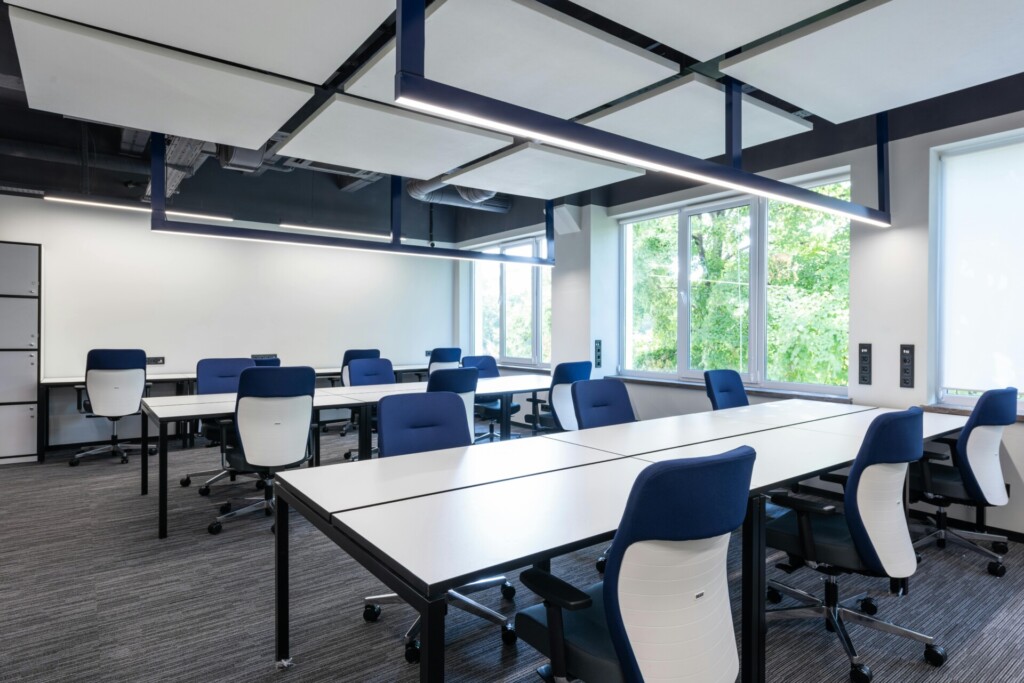
We build with technology that informs every decision. Smart workplace tools transform guesswork into strategic action, providing real-time insights that drive meaningful space improvements.
Room Scheduling Software Creates Predictable Patterns
Room scheduling platforms reveal exactly how your meeting spaces perform. We track booking frequency, duration patterns, and usage gaps to identify demand trends. This data shows which conference rooms stay empty and which huddle spaces overflow with requests.
When construction teams need coordination space, these systems highlight peak booking times and preferred room sizes. Room booking software eliminates scheduling conflicts while providing the utilization data needed to right-size meeting areas. We use this information to reconfigure underperforming spaces into collaborative zones that match actual usage patterns.
Desk Booking Systems Drive Layout Optimization
Hot desking platforms capture employee preferences and workspace demand in precise detail. We analyze booking data to understand which desk clusters attract teams and which zones remain underutilized. This intelligence guides decisions about creating team neighborhoods and optimizing desk ratios.
Desk booking analytics reveal daily and weekly attendance patterns that inform space allocation. When project teams consistently book adjacent desks, we configure permanent collaborative zones. The software eliminates daily friction while generating usage data that supports informed construction and design decisions.
Interactive Maps Streamline Space Planning
Digital floor plans integrate booking systems with visual space management tools. We use interactive maps to model layout changes before construction begins. These platforms show real-time availability, helping employees locate resources while providing planners with utilization heat maps.
Interactive mapping tools connect space data with physical layouts, making it easier to plan team neighborhoods and collaborative zones. We leverage these visual insights to optimize traffic flow and identify opportunities for space reconfiguration that supports both productivity and operational efficiency.
Visitor Management Provides Security and Traffic Intelligence
Visitor management systems enhance security while capturing arrival patterns that inform space planning. We track guest frequency, meeting duration, and popular visit times to understand external space demands. This data helps size reception areas and plan dedicated visitor collaboration spaces.
Beyond security benefits, visitor analytics reveal how external meetings impact internal space utilization. We use this information to designate appropriate zones for client interactions and ensure adequate resources during peak visitor periods.
Occupancy Sensors Deliver Real-Time Performance Data
Environmental sensors provide objective space utilization measurements independent of booking systems. We install sensors that track actual occupancy versus scheduled usage, revealing the difference between reserved and occupied spaces. This data identifies ghost bookings and underutilized areas.
Occupancy sensors capture movement patterns and peak usage times across different zones. We combine this real-time data with booking information to validate space performance and identify optimization opportunities. Sensor data drives evidence-based decisions about space reconfiguration and resource allocation.
Workplace Analytics Transform Data Into Action
Comprehensive workplace analytics platforms integrate multiple data sources into actionable insights. We analyze utilization patterns, employee preferences, and space performance to guide strategic layout decisions. These systems combine booking data, sensor information, and user feedback into unified dashboards.
Analytics platforms reveal correlations between space design and productivity metrics. We use this integrated data to create team neighborhoods, adjust meeting room sizes, and optimize collaborative zones. The combined intelligence from multiple workplace tools enables precise, data-driven space optimization that supports flexible work models while maximizing construction investments.
How Should You Engage Employees, Set KPIs, And Iterate?
Employee input drives successful space planning outcomes. We survey employees to understand their workspace preferences and daily needs. Regular communication about planned changes ensures teams know what to expect and feel included in the process.
Documenting Clear KPIs For Space Performance
We establish specific metrics to measure space planning success. Attendance targets help us track whether design changes increase office utilization. Space utilization rates show which areas support productivity and which need adjustment.
Collaboration metrics reveal how well the layout supports teamwork. We measure meeting room bookings, shared space usage, and cross-team interactions. Satisfaction surveys provide direct feedback on comfort, functionality, and overall workspace experience.
These KPIs create accountability and guide our decision-making process. We document goals like improving onsite attendance by 25% or increasing collaboration scores by 30%. Clear targets help us evaluate whether changes achieve intended results.
Tracking Performance Through Data Collection
We monitor occupancy patterns to understand daily and weekly workspace demand. Dense usage periods reveal when the office operates at capacity. Low-occupancy times highlight opportunities for space reallocation or cost savings.
Workspace demand data shows which amenities employees value most. High-demand areas like quiet zones or collaboration spaces indicate successful design elements. Underused spaces signal opportunities for reconfiguration or repurposing.
We track these patterns for at least three weeks to account for variability. Weekly fluctuations help us understand hybrid schedules and peak office days. This monitoring reveals true usage patterns rather than isolated observations.
Creating Feedback Loops For Continuous Improvement
We compare employee feedback against our established KPIs regularly. This comparison reveals gaps between intended outcomes and actual results. When attendance targets fall short, we investigate barriers that prevent employees from using the office.
Short feedback cycles accelerate improvements and prevent small issues from becoming major problems. We conduct monthly check-ins during the first quarter after changes, then shift to quarterly reviews for established layouts.
Space planning requires ongoing iteration as team needs evolve. We test small adjustments before implementing major changes. This approach minimizes disruption while allowing us to refine the workspace based on real usage data and employee input.
Conclusion And Next Steps

Creating productive office environments requires a methodical approach that balances data insights with practical implementation. We start with understanding how teams currently use spaces, then make targeted improvements that address the fundamentals of comfort and functionality. The key is building incrementally while maintaining clear objectives and measurement systems.
Begin your transformation with a comprehensive audit of current space utilization. Collect occupancy data, review booking patterns, and observe how employees naturally interact with different zones throughout the day. This baseline information guides every decision that follows, ensuring improvements align with actual usage rather than assumptions. Make initial adjustments to lighting, furniture arrangements, and acoustics before pursuing larger renovations. These early wins demonstrate value while providing insights for more substantial changes.
Support your redesigned spaces with integrated workplace analytics and booking systems. Deploy room scheduling software, interactive maps, and real-time occupancy tracking to create seamless employee experiences. Set specific KPIs such as utilization rates, collaboration scores, and satisfaction metrics. Review performance weekly, gather employee input regularly, and adjust layouts based on both data trends and user feedback. This continuous refinement cycle keeps spaces responsive to evolving work patterns and ensures your investment delivers sustained value.
For expert guidance on implementing data-informed office improvements, contact EB3 Construction to discuss your space planning project.

